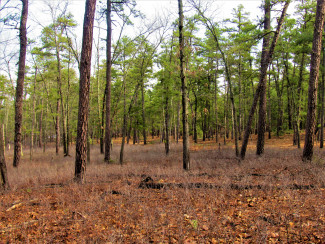
Johns Hopkins UniversityEst. 1876
America’s First Research University
The Jersey Devil in the Twenty-First Century

This is a story about monsters, but not the kind you’re thinking of. Most real monsters do not have leathery wings or claws. They do not fit that stereotype. This is only partly a story of the hoary past. Though it begins in the late 1600s, it resonates with us today because it touches on many of the themes and tropes we live with now in the 21st century.
Within the compass of the Jersey Devil story, we have ideas and concepts we recognize: fake news, wild unfounded accusations, censorship of uncomfortable ideas, politicians going beyond the bounds of accepted behavior, and fear of the religious practices of others. It includes the violent and dismissive treatment of outspoken women who dare step out of the bounds set for them by society, as well as political pundits accusing rivals of the very sins they themselves have committed.
The study of the history of monsters is the study of the history of human fear and hatred. There is little difference between the ancient Greek fear of the Cyclops or Minotaur, the Medieval fear of the Blemmyae, or the Early Modern fear of Werewolves, and the modern bigot’s fear of immigrants, people of color, or outspoken women. Monsters are made, and we make them from the things we fear and hate the most.
The story of the Jersey Devil is a case study in early publishing and censorship in America with an emphasis upon scandal and innuendo. Both the pro-Quaker and anti-Quaker forces involved were so intent upon damaging the other in public, they turned out a large number of pamphlets and books. This is startling given the limited printing capabilities available in the area from New York to Philadelphia during the early eighteenth century. The impulse to make screeds of their attacks (not unlike today’s social media battles) was so intense, the participants would go to any lengths to keep the argument alive. Indeed, it only really ended when Daniel Leeds died in 1720.

Image: The Pine Barrens of New Jersey
This story is also about erasure and transformation. The Native American elements have been erased and the central character of the story, Daniel Leeds, has been transformed from a real person to a fiction. The reality of his life was that he tried to bring the philosophies and attitudes of the new Scientific Revolution and the Enlightenment to the outer edges of the empire. He predicted eclipses, promoted literacy and the study of history. He prompted his neighbors to create their own libraries. He was the first person in print—south of Boston—to support the Copernican Heliocentric model of the universe. He was the first published author in the region (and the first censored). In this way he thought he could advance learning and reason into the woods of the Jerseys. The fantasy of his life has him as an uneducated country bumpkin involved in strange occult rites who brings only a monster to life. His was a complex story oversimplified, as political stories often are today, because simple stories are more easily accepted and digested by the uncritical.
The monster itself has been transformed. Initially, the ‘Leeds Devil’ was a political animal. It’s origins being part of the growing anti-British, pro-independence movement. By the middle of the nineteenth century the political creature had morphed, through the influence of Native beliefs, into a forest spirit, then a strange, physical beast. In the decade or so before the Civil War, the legend was known by only a small number of people, mostly living subsistence lives in the Pine Barrens. In the decades following the Civil War, it had gone all but extinct. The first public references to the Leeds Devil then pop up sporadically. Only in the early twentieth century does the story of a monstrous and horrifying beast that attacks people and lives in the woods takes flight, causing panics and wild speculations. This is where the other human member of the story, Mother Leeds, appears along with the now-familiar story of the creature’s birth in the depths of the forest. By 1909 the name Leeds Devil was transformed, by carnival promoters, into Jersey Devil. Their shenanigans at the Ninth and Arch Street Dime Museum would cement the reputation and the appearance of the creature in the popular imagination for the modern age.
By the late twentieth century, and into the twenty-first, television documentary makers, enthralled by the popularity of depictions of monsters (and more concerned with ratings driven by speculative scandal and ‘mysteries’), began to incorporate the legend of the Jersey Devil alongside the stories of Bigfoot, the Loch Ness Monster, and ancient aliens. The original story of Daniel Leeds and his worthy attempts at enlightening his neighbors in the early 1700s had by now been completely lost.
Monsters come in many guises and forms. Bigotry is a monster, religious hatred is a monster, and political intolerance is a monster. American history has a long list of monstrous behavior. From the genocide of the Native people and the embrace of slavery, to fear of immigrants and those of religions we consider different, monsters have always been with us. The Jersey Devil still whispers to us in the twenty-first century, and helps to illuminate some of the earliest examples of our national, human folly.
Brian Regal is Associate Professor of the History of Science, Technology, and Medicine. Together with Frank J. Esposito he is the co-author of The Secret History of the Jersey Devil: How Quakers, Hucksters, and Benjamin Franklin Created a Monster, which is now available in paperback.


